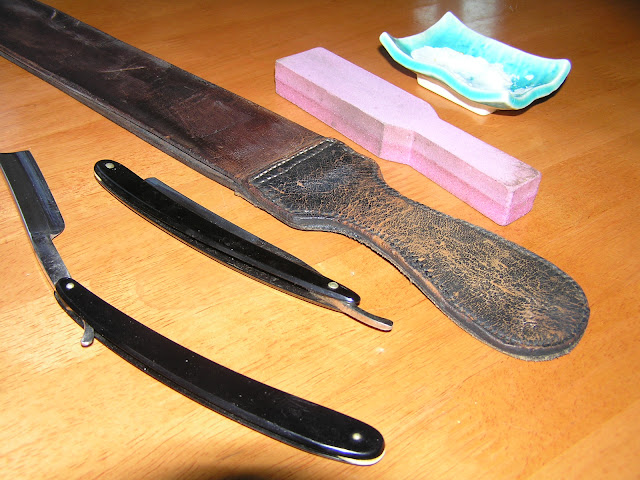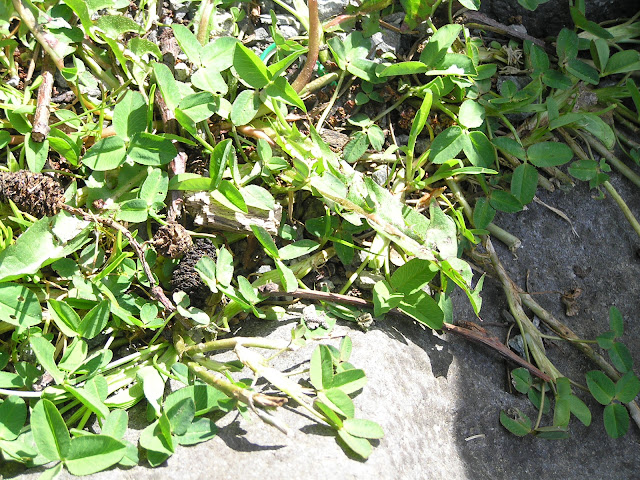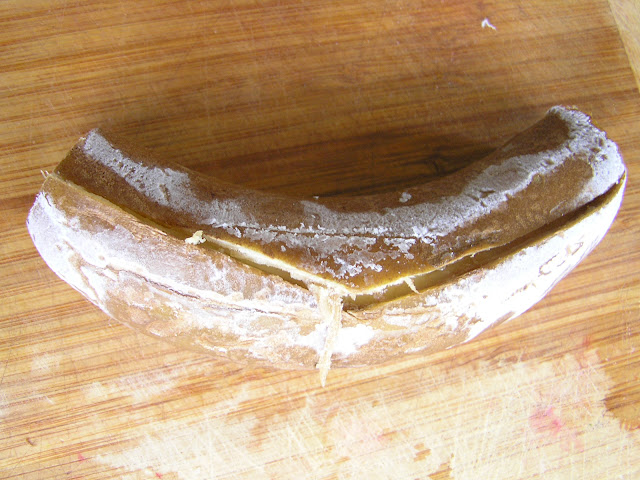Sustainable Shaving Options
When I was first pregnant I had to nix my partner's use of canned shaving creams- the perfumes they contained made me ill, so we bought him a nice bar of unscented shaving soap and a lather brush. The shaving soap has been great. We love that it lasts forever and has no can to throw away. Another natural option would be to make our own shaving soap, which is definitely on the horizon. However, he continued to use disposable razors for several years until recently, when he researched non-disposable options.
A few months ago he switched to using straight razors. I think they take a bit of time to maintain, including being honed on a leather strop before each use, but he only shaves every two or three days, so it's not too big of a deal. They also require occasional sharpening with a whetstone.
I love that the sustainable solutions for the future are often to be found in how we used to do things. This is definitely the low-tech shaving option!
I don't think this was too much of a learning curve to get started. There is definitely a skill to any blade sharpening, and a razor has to be much more finely honed than a kitchen knife. Razors can be taken in to a knife sharpening service, where they will be professionally sharpened for a small fee. When we first bought Nik's razors, we did have them professionally sharpened.
The shaving itself is pretty straightforward. If I shaved my legs, I would certainly give the straight razor a try. I don't think it would work very well for armpits though, so I'm sticking with disposables for now.
Nik's shaving kit includes two razors, a leather strop, and a sharpening stone, as well as the cup with soap & shaving brush, pictured above. The small green dish contains coconut oil, which he used to soften the leather strop when he first bought it. He was able to find both the strop and razors used on ebay.
Below are Amazon Affiliate Ads. Any purchase made through them helps support our family. Thanks in advance!






































